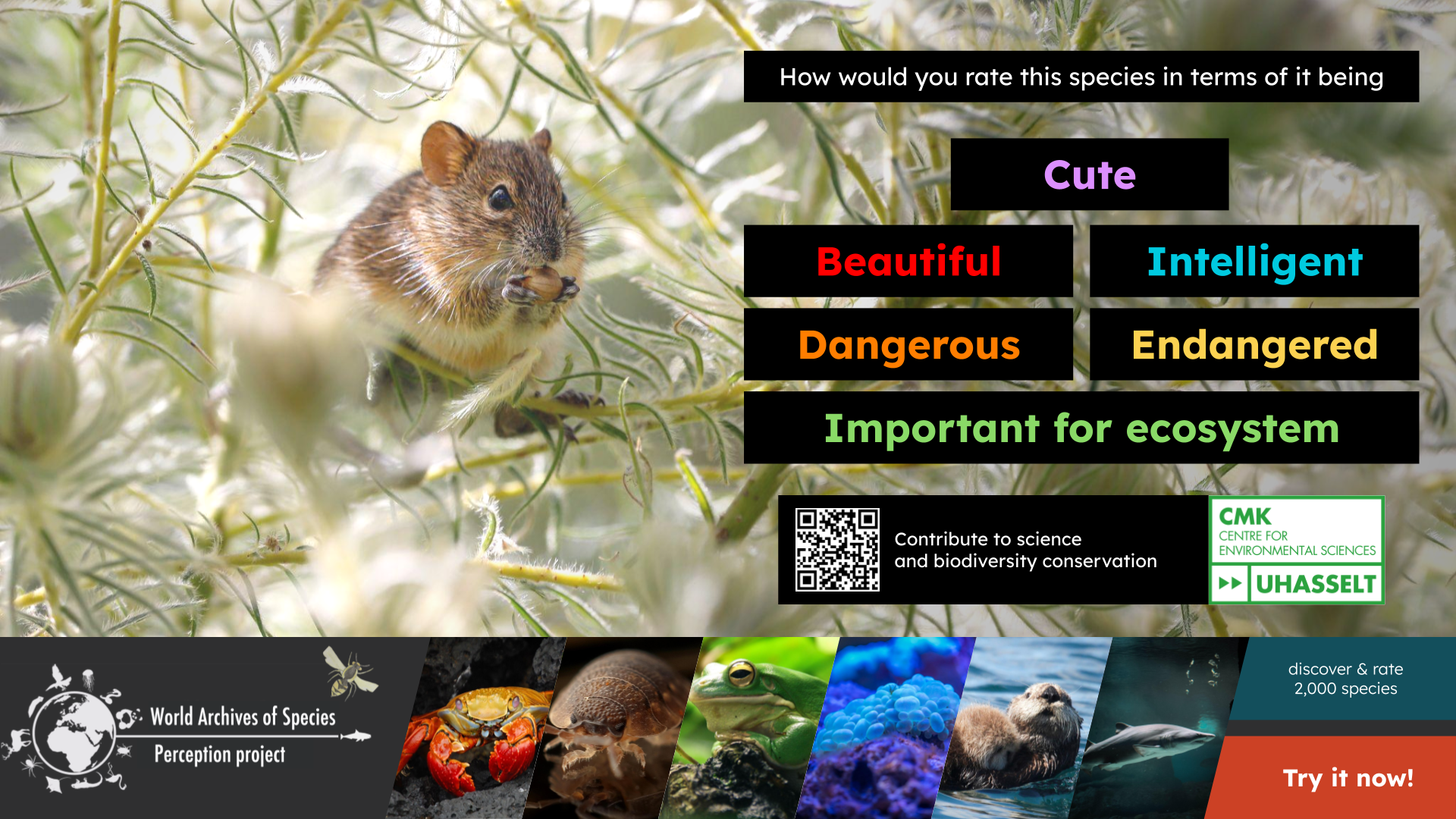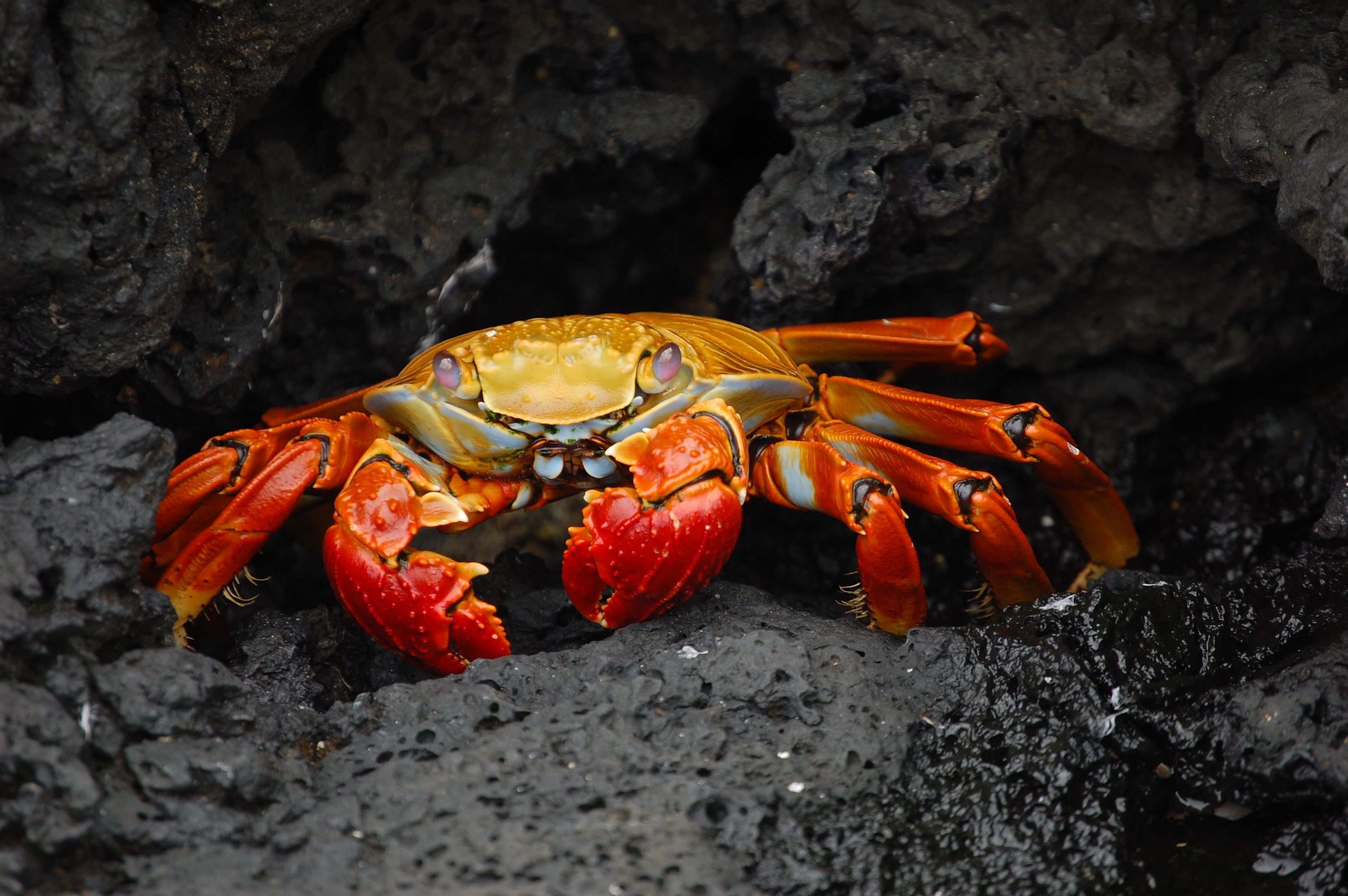From earthworms to sea anemones and pandas. Which animals are the cutest? UHasselt examines public perception of animals
How beautiful, cute, intelligent or dangerous do you find the giant panda, a crane, a sea anemone or a slug? With a large survey of the general public, the Center for Environmental Sciences at UHasselt wants to gain more insight into public perception of animal species. To this end, the researchers developed a "beauty contest" with a platform where visitors can rate some 2,000 animal species. The goal: to help nature conservation.


WASP Project
What makes an animal species attractive and what just isn't? When do we consider an animal intelligent or dangerous? And do we view mammals differently than we do birds or invertebrate species? These questions are at the heart of WASP (World Archive of Species Perception) a study by the Center for Environmental Sciences that focuses on nature conservation.

Research shows that attractive animals are promoted and better protected than species that are perceived as less attractive. For example, large, fluffy and cuddly animals tend to be promoted more by zoos and conservationists, so these animals receive more attention, support and funds from the general public.
Nature Conservation
"So everyone knows what pandas or tigers look like, but you can't say the same about nightjars, horned sharks or flatworms," says Tuan Nguyen, doctoral researcher within the WASP project. "As a result, we don't actually know how society really views the majority of global biodiversity. Knowing what can spark public interest in different species can help to communicate better about them and their protection. Protecting beautiful animals is of course fine and very valuable, but at the same time there is the risk that species such as pollinators and natural predators, are given less protection because they can be seen as unattractive, dangerous or annoying despite being crucial to nature."
Beauty contest
The UHasselt researchers therefore developed the WASP platform. They selected 2,000 animals that provide a representative set of all animal species on Earth. Visitors to the platform can very easily rate these animals on the platform based on photos for factors such as beauty and cuteness and whether one considers them dangerous or intelligent. They are also asked whether they think the animal is useful for biodiversity and whether it is endangered.
"You can think of it as a beauty contest, but for animals," says prof. dr. Robert Malina, head of the Center for Environmental Sciences. "We would like to collect 100,000 opinions on animals, to map public perceptions around global species and make the results public. This first open-access database on perceptions of animal species can help support wildlife policy and conservation in practice.”
For example, the data collected can be used to explore what emotions certain species arouse in the general public (joy, fear, disgust,...) and whether the ecological importance of species such as, for example, pollinators is given enough recognition. “Understanding those public perceptions of animals, including feelings of beauty, can help conservationists take into account people's preferences and prejudices toward different species in order to grow societal support for the conservation of all biodiversity”, prof. dr. Maarten Vanhove adds.

Participants wanted
Participating is very easy via this link. Visitors rate each animal based on different criteria. There is no limit on the number of ratings, you can stop at any point in the poll. Every vote counts.
Tools
Social Media
- © 2026 2022 - Hasselt University
- Terms of use
- Privacy statement
- Cookie policy
